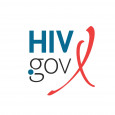In light of rising cases of syphilis in the U.S. and the intersection between syphilis and HIV, HIV.gov has posted a new page on syphilis and people with HIV to our consumer-focused HIV Basics pages. Syphilis and other sexually transmitted infections (STIs) are hitting our nation hard.
A 2023 report from the Centers for Disease Control and Prevention (CDC) showed that in a single year (2020-2021), reported U.S. syphilis cases increased nearly 32% for combined stages of the infection. Syphilis disproportionately impacts gay, bisexual, and other men who have sex with men (MSM), a population also disproportionately impacted by HIV. In 2021, 36% of cases of primary and secondary (P&S) syphilis—the most infectious stages—were among MSM.
Syphilis increases a person’s chance of getting or transmitting HIV, and while syphilis is treatable and curable, having HIV can make syphilis harder to treat, especially if the person has advanced or untreated HIV.
As the National HIV/AIDS Strategy notes, syphilis is part of the syndemic of HIV, sexually transmitted infections (STIs), viral hepatitis, and substance use disorders—a set of linked health conditions that intersect in populations and exacerbate their effects. To be successful in addressing these issues, our efforts must go beyond disease-specific responses to identifying and addressing root causes such as lack of stable housing, food, or health care; unemployment; and other social determinants of health.
Read and share the new page to help increase awareness of syphilis in the HIV community, reduce the incidence of new syphilis cases, increase the number of people who access syphilis testing and treatment, and reduce new HIV transmissions.
Learn More
- HIV.gov - Syphilis and People with HIV
- CDC.gov - Syphilis Fact Sheets and Other Content
- U.S. Department of Health and Human Services - STI National Strategic Plan
This blog post was published December 5, 2023, on HIV.gov.








Comments
Comments